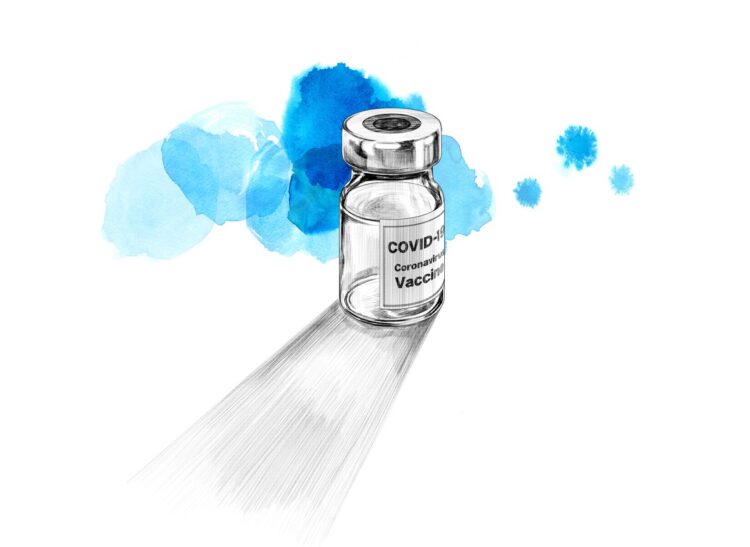August 13, 2021
In early spring, even as Americans lined up for the newly available COVID-19 vaccines, a group of Harvard Medical School (HMS) students and researchers at Ariadne Labs saw change looming. Very soon, they knew the clamor for shots would slow down and instead there would be a clamor to reach those reluctant to be vaccinated. In anticipation of this, they launched a multi-faceted project to determine how to reach out to those with questions about getting vaccinated.
The sequence of events that led up to release of the COVID-19 Vaccine Confidence Toolkit in May, 2021, were presented to the Aug. 13 meeting of the Global Vaccination Site Collaborative, and produced a lively discussion on ways to face vaccine resistance and hesitation.
“When the vaccine first appeared, the demand was greater than the supply; things were moving quickly and people on the front lines were trying to get immunizations,” said Chief Medical Officer at Ariadne Labs, Evan Benjamin, MD, MS, FACP, who was among the group that created the Vaccine Confidence Toolkit. “But we anticipated that things were going to change — that we would likely see demand fall and there would be a significant number of people who were lacking confidence or had questions about the vaccines.”
HMS students and researchers at Ariadne Labs, which has pioneered conversation guides for helping people make health-related decisions such as the Serious Illness Conversation Guide, began pondering the best path forward.
What does vaccine hesitancy actually look like? What are people’s specific concerns about the vaccine? What do we know about the vaccines and their side effects? And who do people trust to give them clear, accurate information about the vaccine?
Researchers examined the available literature and quickly concluded that the vaccine hesitant were “not a monolithic group” in terms of demographics or even degree of hesitancy, said Kristi Hill, a fourth year HMS student. “It is really important to distinguish between people who are hesitant and have some ambivalence about the vaccine from those who are resistant, saying they absolutely will not get the vaccine.” Research suggests you are more likely to have success convincing the ambivalent population, which constituted the greatest percentage of those who are not sure about vaccination, Hill said.
So what was the best way to reach this group? Research indicated family friends and health care providers were the best messengers and personal physicians would be most effective. Examination of motivational literature indicated the more effective approach was creating an open and caring environment to elicit the patients’ concerns. Thus, primary care physicians should be clear and transparent when answering questions.
Carl Lawrence, a recent HMS graduate and current pediatric resident at Mount Sinai Hospital, described how, after initial feedback, a conversation guide about vaccines and a baseline fact sheet were developed and distributed to care providers for two more rounds of feedback. He noted how quickly new information and studies about the vaccines became available, prompting the team to focus on more immutable facts and strategies to dispel myths. The final toolkit had a conversation guide, a visually appealing patient handout, and list of external resources. “The handout does not have complicated scientific language that a patient would not understand,” he said. Lawrence prefaced his comments by acknowledging that during his evening clinic, he had no luck in convincing a patient to get vaccinated, saying with a sigh, “It’s easier said than done, but we try.”
The COVID-19 Vaccine Confidence Toolkit, which is both web-based and contained in a downloadable PDF, has been shared widely with a variety of organizations. Thus far, there have been 15,00 social media impressions; 2,000 direct toolkit views; and 402 toolkit downloads. Unfortunately, the Delta variant has raised new concerns. “The misinformation pipeline is changing. There’s new misinformation out there,” said Benjamin.
The collaborative’s follow-up discussion focused on creating partnerships, such as with the National Association of County and City Health Officials; how to increase the volume of toolkit uptake; the impact of breakthrough infections; and the burgeoning multifaceted reasons people give for not getting vaccinated.
“The rebuttals (to vaccination) I get are similar, the problem is there’s an infinite number,” Lawrence said. “It has not been a question for me of one discreet fact. It’s a constellation.” Another difficulty: Questions may be pointed and appropriate but answers may be nuanced, particularly on issues like transmissibility, he said.
“We have to be very good listeners and find that middle ground, find that ‘yes,’” said Eric Goralnick, MD, MS, Associate Faculty, Ariadne Labs and Principal Investigator of the collaborative. “We have to commit to learn from each other what works and doesn’t work in these conversations because this is new ground for all of us.”
Key Takeaways
Vaccine hesitancy is found in a wide swath of demographic groups. Those who are more concerned about COVID and who had flu shots in the past were more likely to get the COVID-19 vaccine
- Vaccine reluctant involves many factors but can be generally divided into these areas:
- Safety and side effects; they may have had bad experience with previous shots.
- Efficacy. Will it work as promised?
- Concern about the speed in which the vaccine was developed. Was it rushed?
- General mistrust of the government and health care system
- Personal physicians can be trusted messengers but there are others, including community and religious leaders.
- Reasons for declining a vaccination may be multifaceted; there is often no one fact or piece of evidence that will be convincing.
- Every reluctant person who agrees to a vaccination is a victory and should be celebrated.



